Deadlock Pro Scene Predictions: Top Players, Meta Shifts, and Esports Outlook
Updated On: November 29, 2025 by Aaron Connolly
Current State of the Deadlock Pro Scene
Deadlock’s competitive scene is growing fast, even though the game’s still in early access. Community tournaments like Fight Night #15 and Virtus.pro’s steady involvement hint at real esports potential.
Players from Overwatch and other games keep jumping in, looking to make their mark in Deadlock.
Key Tournaments and Events
Fight Night stands out as the main tournament series for Deadlock’s rising pro scene. On February 26th, 2025, Fight Night #15 brought together top teams like Virtus.pro and Hydra Nation, both making another finals appearance.
The Downtown Showdown has also become a key event. These tournaments highlight Deadlock’s competitive depth and offer prize pools that keep top-tier players interested.
Organizers are rolling out more structured formats. They’ve started using proper pick/ban phases, which a lot of pros say are crucial for fairness.
The Aurora Deadlock Masters featured a £8,000 prize pool. While it started off focusing on streamers, not just hardcore competition, it definitely helped Deadlock’s reputation as an esport.
Tournaments are popping up more often now. Instead of sporadic events, we’re seeing weekly and monthly competitions, which shows there’s real, ongoing interest.
Esports Organisations Entering Deadlock
Virtus.pro is leading the way among established orgs. They keep showing up at Fight Night, putting real investment into Deadlock’s future.
Traditional esports teams are starting to scout for new talent. Still, most orgs seem hesitant, probably because Deadlock’s still in early access and the future’s a bit uncertain.
Collegiate competitions are starting to pop up across North America and Europe. These smaller leagues provide important grassroots development and help find new talent before the big orgs jump in.
Bigger orgs seem to be waiting things out. Teams like FaZe and Team Liquid haven’t announced anything yet—they’re probably holding off until Valve reveals a full release schedule.
Transition from Other Esports Titles
Overwatch players have pretty much taken over Deadlock’s early pro scene. Their background in hero shooters gives them a big leg up with Deadlock’s mechanics and team strategies.
Former Dota 2 pros bring loads of MOBA know-how. They just get laning, item builds, and map control, and that gives them a clear edge.
Many players say Valve’s history with esports keeps them motivated to make the switch. The company’s support for Dota 2 and CS2 gives people confidence that Deadlock could really take off.
Switching over isn’t always easy, though. Players have to get used to Deadlock’s mix of shooter action and MOBA strategy—it’s not quite like anything else.
Cross-training is becoming normal. Lots of pros keep up with their main game while building Deadlock skills on the side, just in case.
Predicted Trends in Professional Meta
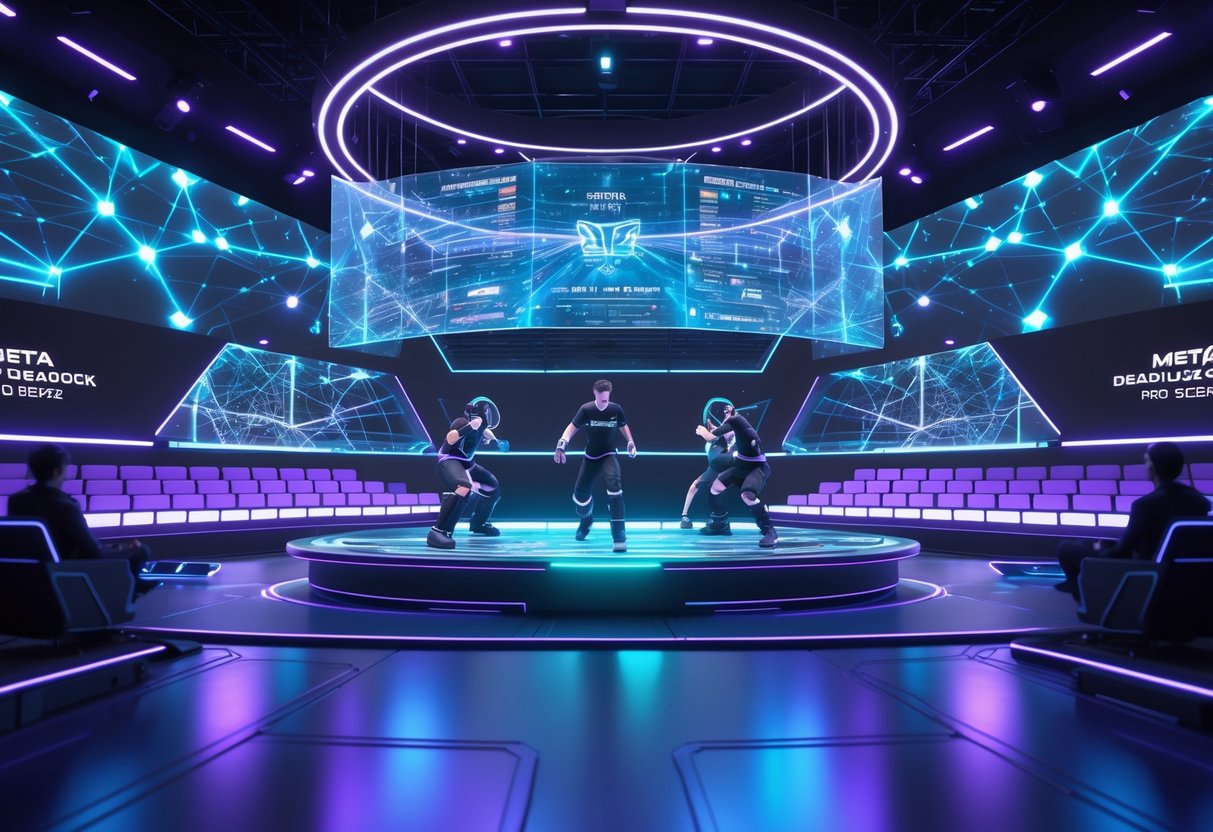
Major patches will likely shake up hero rankings and force teams to rethink their strategies. New playstyles are bound to pop up as players experiment with different abilities and item combos.
Maps will probably matter more as teams figure out the best comps for each environment.
Influence of Patch Updates
Frequent balance changes will keep the pro scene on its toes. Heroes like Seven, who’s all over the meta right now with crazy-high win rates, will probably get nerfed, opening the door for less popular picks.
Teams need to adapt fast if they want to stay on top. When devs tweak hero abilities or item prices, whole strategies can fall apart overnight.
Pro orgs are already hiring coaching staff who focus on rapid meta analysis. Quick adaptation really matters more than just perfecting a single playstyle.
The teams that spot overpowered combos before anyone else will keep winning. Patch notes are basically must-reads for any serious squad.
Even small balance tweaks can totally upend which heroes pros value. Just a 10% damage nerf might bench a hero for an entire tournament cycle.
Emergent Playstyles
We’re already seeing teams try out new comps that mix MOBA roles with shooter tactics. Some pros are testing aggressive, early-game pushes to lock down map control.
Utility-heavy comps are catching on, especially among top teams. These lineups focus more on gathering info and blocking areas than just dealing damage.
Pro players are realizing that individual skill isn’t everything—team coordination usually wins matches. The best squads treat Deadlock more like a tactical shooter with MOBA elements, not the other way around.
I expect we’ll see new roles pop up, beyond just carry and support. Some teams might use dedicated roamers who only care about map presence and objectives.
Creative item builds will probably become each team’s signature. As players get comfortable with off-meta combos, we’ll see more personal takes on hero builds.
Impact of Map Selection
Pro teams are starting to cook up map-specific strategies. Certain maps just favor different comps and playstyles.
Map control really decides matches in the pro scene. Teams that nail their positioning and rotations tend to steamroll the competition.
Map vetoes will become just as important as hero drafts in tournaments. Teams will need analysts who specialize in maps and can read their opponents’ habits.
Some heroes just work way better on certain maps because of the terrain. Teams have to master a bunch of different comps to stay competitive everywhere.
Map knowledge sets the pros apart from the amateurs more than pure aim does. Knowing sight lines, rotation routes, and when to fight for objectives is key for winning tournaments.
Notable Deadlock Players to Watch
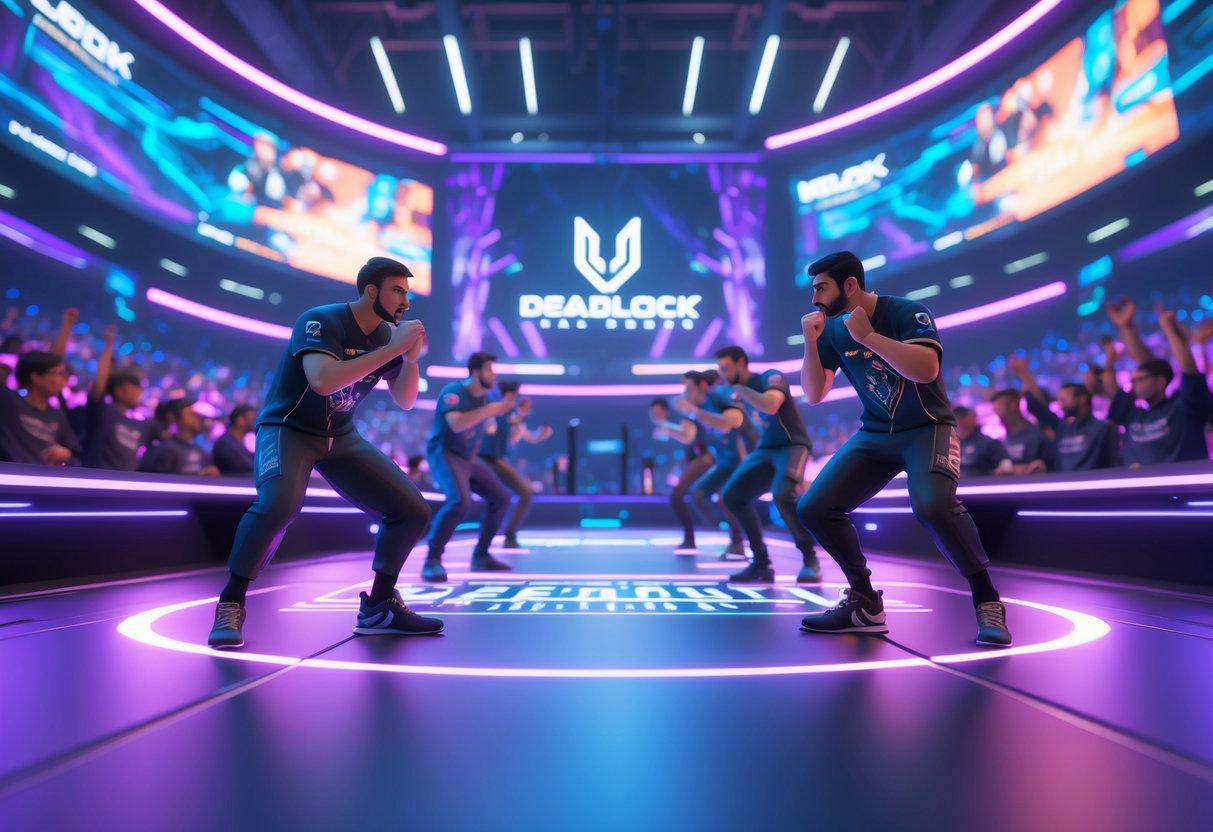
The competitive scene features players from top games like Overwatch and Apex Legends who’ve switched over. Some rising stars have already snagged big prize money, and veterans bring years of FPS and MOBA experience to the table.
Rising Stars of the Scene
Danila “Sunset” Solovio leads the way with the most winnings in Deadlock’s early days. He took first at both BetBoom DEADLOCK CUP #2 and FISSURE Underworld, pocketing £7,500 from the latter alone.
Sunset’s story kind of proves how fast new talent can show up. He retired from Apex Legends in 2023 after a pretty quiet run, but Deadlock gave him a fresh start. Shows that jumping into a new esport can totally change a career.
Konstantin “Hardecki” Kozlov teamed up with Sunset to win FISSURE Underworld. Their squad, Pojilaya Skumbriya, swept the grand finals 2-0. Hardecki left Apex Legends for good in September 2024 to focus fully on Deadlock.
João “Hydration” Goes Telles stands out for his flexibility. He’s played for The Cabal, Mahjong and Krill, and Hydra Nation. He’s won five different tournaments, and even his “worst” result is a 3rd-4th place finish.
Veterans Making an Impact
Former Overwatch pros bring a ton of tactical sense to Deadlock. Carson “Zerggy” Leung is a great example—he brought his Overwatch mechanical skills over and quickly started dominating.
Zerggy plays for Buff Enjoyers, a team that’s racked up several tournament wins. They took first at Aurora Deadlock Masters, gdolphn IQON Cup, and Deadlock Fight Night #1 Europe, and even grabbed third at FISSURE Underworld.
Normunds “sharyk” Faterins has deep experience from Overwatch and VALORANT. He’s been competing since 2015 and played for big orgs like Toronto Defiant. His partnership with Zerggy on Buff Enjoyers shows how veteran leadership can really drive a team to success.
These pros get team play and meta shifts from their past games. Their experience steadies the scene while newer players find their footing.
Player Backgrounds and Crossovers
Most top Deadlock players come from Overwatch and bring strong team-fighting and positioning skills. The hero-shooter mechanics just click for them, giving them a clear edge early on.
Apex Legends pros like Sunset and Hardecki offer something different. Their background in battle royales means they’re used to making quick calls and handling high-pressure moments. Both played for Gambit Esports and Aurora Gaming before making the switch.
Esports orgs are already noticing Deadlock’s potential. Nouns Esports, which also fields Dota 2 and CS teams, announced a Deadlock roster while the game was still in closed playtest. That’s a pretty bold move and shows growing interest.
Players are migrating to Deadlock in search of new chances. A lot of them struggled to break out in their old games but are finding real success in Deadlock’s fresh scene. It’s actually pretty exciting—careers are rebooting and new rivalries are forming.
MikaelS1: Profile and Competitive Insights
Mikael “MikaelS” Suontama stands out as one of Deadlock’s best, playing for Virtus.pro with impressive consistency. His tournament record and deep hero pool make a lot of people think he’s already among the game’s elite.
Signature Playstyles
MikaelS1 thrives with damage-heavy heroes that let him control team fights. His Paradox builds focus on burst damage, and he times his attacks to make the biggest impact when it matters most.
His Vindicta play shows off his map awareness. He pushes aggressively but always keeps a way out, so he can pressure enemies without getting caught.
He doesn’t just stick to one hero—MikaelS1 picks what his team needs. That flexibility sets him apart from the usual specialists.
Some of his main strengths:
- Always finding strong positions for damage
- Great timing in team fights
- Wide hero pool
- Aggressive but smart play
He’s not flashy for the sake of it. MikaelS1 relies on mechanical precision and stays calm during high-stress matches.
Tournaments and Achievements
MikaelS1’s results speak for themselves—eight first-place finishes since he entered Deadlock’s pro scene. He’s earned over $9,983 in prize money, showing steady performance at the top level.
The 1win Bombshell series really became his thing. He won four volumes in a row between December 2024 and June 2025, dominating Europe’s field.
Big wins include:
- Leon Masters: Deadlock (2-0 in the finals)
- Multiple 1win Bombshell titles
- Aurora Deadlock Masters showmatch
His only real stumble was at FISSURE Underworld, where Virtus.pro finished 3rd-4th. That’s unusual for MikaelS1, which says a lot.
He’s just 20, so there’s probably a lot more to come. Tournament organizers now see Virtus.pro as favorites, mostly because of his reliable carry power.
Team Strategies and Compositions
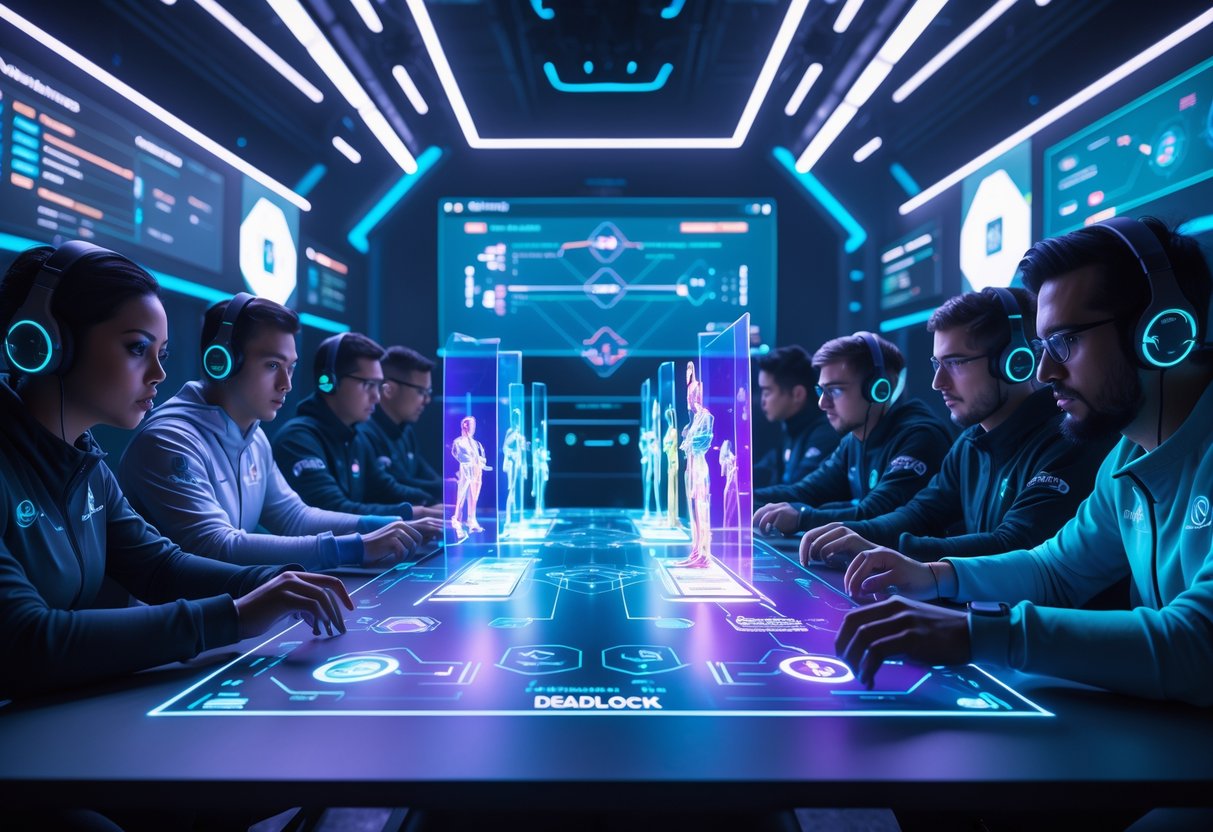
Pro teams are already trying out different ways to handle map control and hero picks. The top comps usually balance utility and strong teamwork.
Approaches to Map Control
Teams in Deadlock need to move together across multiple lanes, but not always as a single group. Right now, most teams assign one player per main lane and keep two others ready to rotate.
This lets them react fast to enemy pushes without leaving parts of the map empty.
Territory control relies on dropping defensive abilities at key chokepoints. Teams who lock down the map early usually end up with better spots for objectives later.
Quick win: Focus on locking down one lane first, then spread out. That gives your team a safe spot to fall back to.
The best Deadlock players know map control shifts as the match goes on. Early game control doesn’t look the same as the late-game setup.
Teams should lock down vision control first, then slowly expand. This careful approach stops overextending and helps build map presence bit by bit.
Drafting and Hero Selection Guide
Draft phases force teams to juggle damage, utility, and survivability for every position. Most teams grab their core roles early, then fill in with situational heroes.
Priority picks usually mean:
- One solid initiator for team fights
- At least two dependable damage dealers
- One support who can help the whole team
Counter-picking really matters in pro matches. Teams need backup plans if someone bans their favorite heroes.
Warning: Don’t stack your draft with too many similar heroes. If you overlap roles, you’ll probably have problems once fights get messy.
Draft flexibility often trumps individual hero mastery. The best Deadlock players can handle several heroes within their main role.
Think about map-specific picks during the draft. Some heroes shine on certain maps but flop on others because of layout quirks.
Teams should practice at least three different composition styles. That way, opponents can’t guess your strategy every match.
Hero Builds and Innovative Setups
The Deadlock pro scene keeps evolving with new builds and strategies that shake up the meta. Lately, teams have started experimenting with oddball item combos and ability paths that could change how people play at the top level.
Trending Hero Builds
Pro players love to push limits with builds that break tradition. Seven is popping up in more hybrid tank-damage roles instead of going all-in on damage. This shift gives teams surprise survivability in big fights.
Vindicta mains now grab early mobility items, skipping straight damage at first. The extra movement helps dodge ganks and keeps their damage relevant later.
Support heroes like Ivy are picking up aggressive items early. Teams want to catch enemies off guard with sudden bursts of damage, even during moments that should feel safe.
Infernus players now lean into defensive options more than before. They’ve realized that staying alive longer actually leads to higher total damage, instead of just going full glass cannon.
The best builds mix classic strengths with a few curveballs. Teams who figure out these hybrid approaches end up with a real edge against standard lineups.
Analysis of Unique Strategies
A fresh strategy is mirroring opponent builds but swapping out key items. Teams watch enemy loadouts during the match and adjust their own builds to counter specific threats. Pulling this off takes sharp game sense.
Economy-focused builds are also catching on. Players hold off on expensive items to keep a gold lead, hoping to snowball later when it matters most.
Role-swapping builds let heroes flex into new positions mid-game. Sometimes a damage dealer bulks up to play off-tank if the team needs it. This throws off opponents and opens up tactical plays.
Teams tinker with ability upgrade timing too. They’ll delay certain skills and max others to hit power spikes at weird moments. Catching the enemy off guard with these spikes can turn a fight.
Comparing Deadlock’s Pro Scene to Other Titles
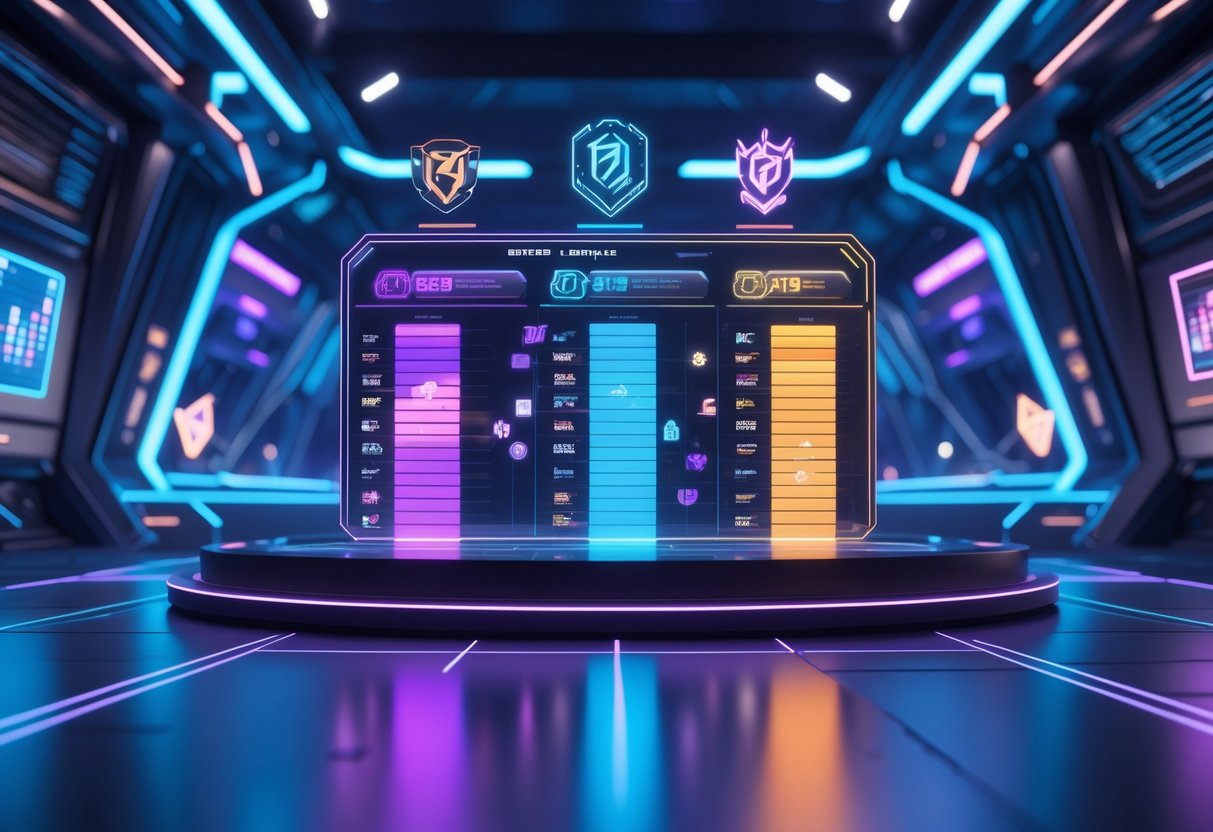
Deadlock’s competitive scene borrows a ton from games like Dota 2 and Overwatch. Knowing where these influences come from helps us guess where Deadlock’s pro scene might go.
Influence from Overwatch
Deadlock pulls in Overwatch’s hero-based combat and the need for tight team play. Every character has a role, just like in classic FPS lineups.
Tournament formats look familiar too. Early events like Deadlock Fight Night use invite-only setups, much like Overwatch League. This gives instant prestige, but maybe stifles grassroots growth a bit.
Gameplay pace stands out as a key difference. Overwatch matches wrap up in 15-20 minutes, but Deadlock’s MOBA elements stretch games to 30-45. That changes how people watch and how broadcasts get scheduled.
Pro teams in Deadlock need more than just sharp aim. Overwatch pros bring mechanical skill and quick rotations, but Deadlock also asks for economic management and longer-term strategy.
The switch isn’t always easy. Plenty of ex-Overwatch players have trouble with Deadlock’s laning and item mechanics. Teams mixing FPS and MOBA talent seem to be finding their footing fastest.
Lessons from Dota 2
Dota 2’s fingerprints are all over Deadlock’s strategy layer. The pick/ban phase in grassroots Deadlock events basically copies Dota 2’s system.
The economy works almost the same way as Dota 2. You last-hit creeps, buy items, and juggle team resources. Former Dota 2 players usually pick up these mechanics faster than FPS veterans.
Tournament prize pools are shaping up to follow Dota 2’s lead. Community-funded events through battle passes could pump up the numbers. Even early Deadlock tournaments have seen viewership and prize pools ramp up.
Regional patterns look familiar as well. European teams are dominating early, just like they did in Dota 2’s early days. Asian regions haven’t really jumped in yet, but they’ll probably make waves soon.
Team organisations are already watching. Some big Dota 2 sponsors have started scouting Deadlock players. That’s a sign that pro contracts and player trades could arrive sooner rather than later.
Role of Valve in Pro Scene Development
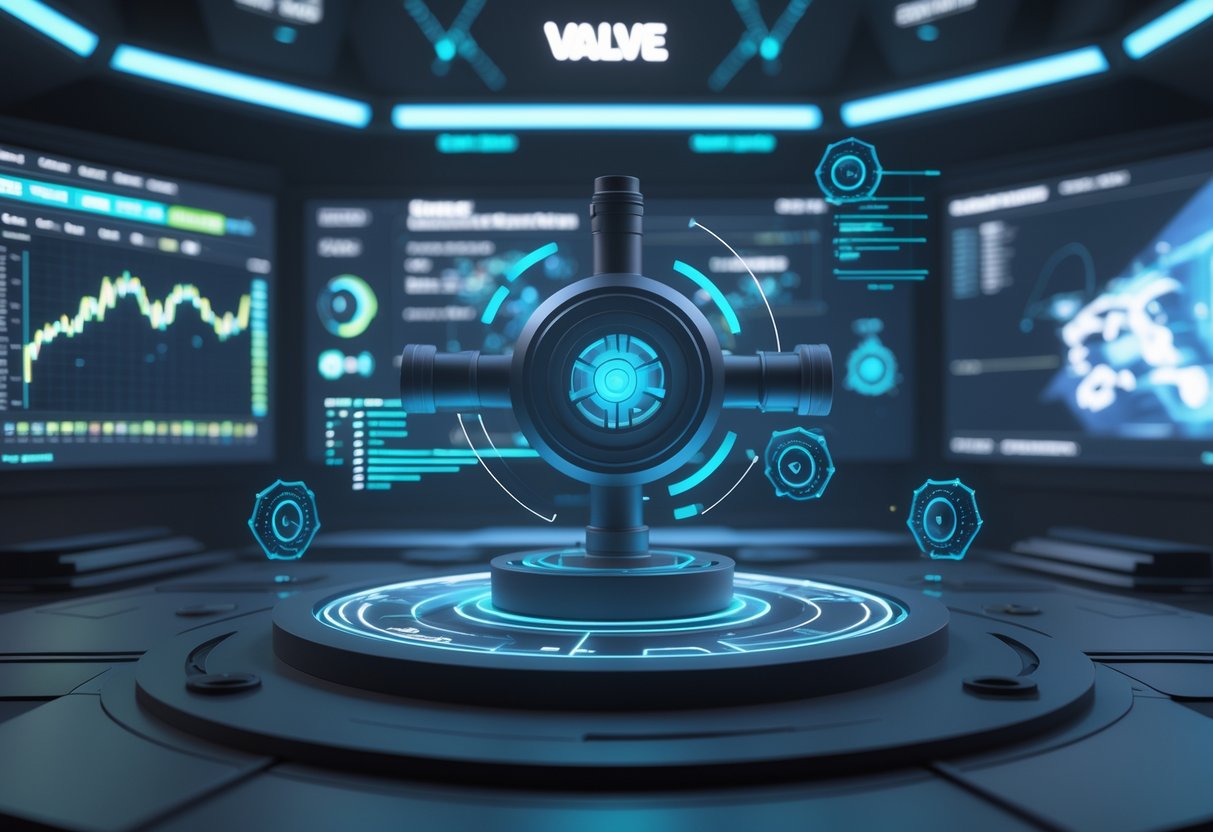
Valve’s history with Dota 2 and CS2 puts them in a strong spot to shape Deadlock’s future. The way they handle infrastructure support and official events will decide if Deadlock blows up or stays a niche title.
Support for Esports Infrastructure
Valve always puts money into the tech that keeps pro gaming running. For Deadlock, we’ll probably see the same sort of infrastructure they’ve built before.
Tournament Integration Systems should look a lot like Dota 2’s. Valve usually lets you watch matches right inside the game, swap player views, and see real-time stats.
Their Developer API gives tournament organisers what they need. Third-party platforms can pull match data, stats, and brackets, making it easier for teams to train and analyse.
Anti-cheat tech is another big deal. Valve Anti-Cheat (VAC) will keep Deadlock’s competitive integrity solid from the start. Pros want to know their matches are fair.
The prize pool system from Dota 2 could show up in Deadlock too. When the community funds prizes through in-game purchases, it draws top players and gets everyone involved.
Official Events and Announcements
Valve’s event style is all about quality, not quantity, and that’s likely to shape Deadlock’s pro scene.
The International model seems like a perfect fit. One huge annual championship, massive prizes, and global hype. It gives pros a clear goal and keeps the scene exclusive.
Regional qualifiers should pop up as the player base grows. Valve usually supports local scenes before bringing everyone together for the big show. Deadlock will probably follow that path.
Official partnership programmes with tournament organisers help keep standards high. Valve doesn’t run every event but sets rules and supports the ones they approve. That way, tournaments look and feel professional.
Communication from Valve is always careful and a bit slow. They don’t make big promises unless they’re sure. When they announce Deadlock tournaments, teams and fans can count on real support and funding.
Growth of Esports and Viewer Engagement
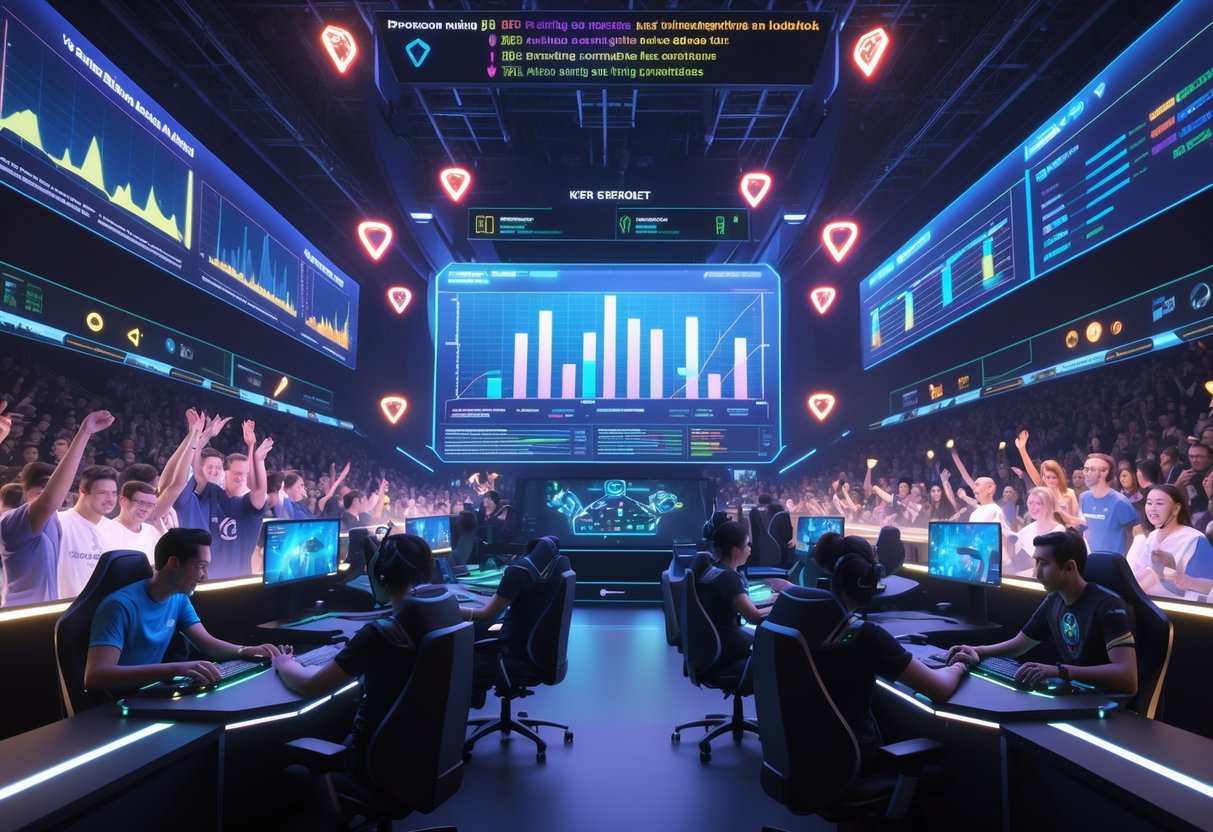
Esports viewership has exploded, jumping from niche streams to 540 million global viewers by 2022. Deadlock’s early numbers show that new games can still grab huge audiences, especially with fan communities and content creators driving the hype.
Fan Reception and Community Growth
Deadlock’s Alpha playtest racked up 15.52 million hours watched on Twitch since August 23rd. Clearly, gamers are hungry for something new and competitive.
The mix of MOBA and shooter mechanics gets both casuals and hardcore players talking. A lot of folks believe Deadlock could be the next big esport.
Early signs from the community:
- Community tournaments are already live
- Tons of chatter on Reddit and Discord
- Pro players from other games making the switch
- Danish org Heroic teasing interest on social media
The fast fan adoption feels a lot like other successful esports launches. If this momentum keeps up, the competitive scene could stick around for a long time.
Streamers and Content Creators
Streamers have become Deadlock’s best marketing tool. The Aurora Deadlock Masters tournament, for example, features top content creators instead of only pro players.
This gets new games in front of big audiences fast. Streamers pull in their own fans, which instantly boosts viewership.
Where creators make the biggest impact:
- Tutorials to help new players learn the ropes
- Highlight clips that show off wild plays
- Tournament coverage to get people interested in competition
- Community events to keep things lively between official tournaments
Content creators often shape how competitive scenes grow. Their feedback can even nudge developers to tweak which modes or features work best for esports.
Future Outlook and Possible Shifts
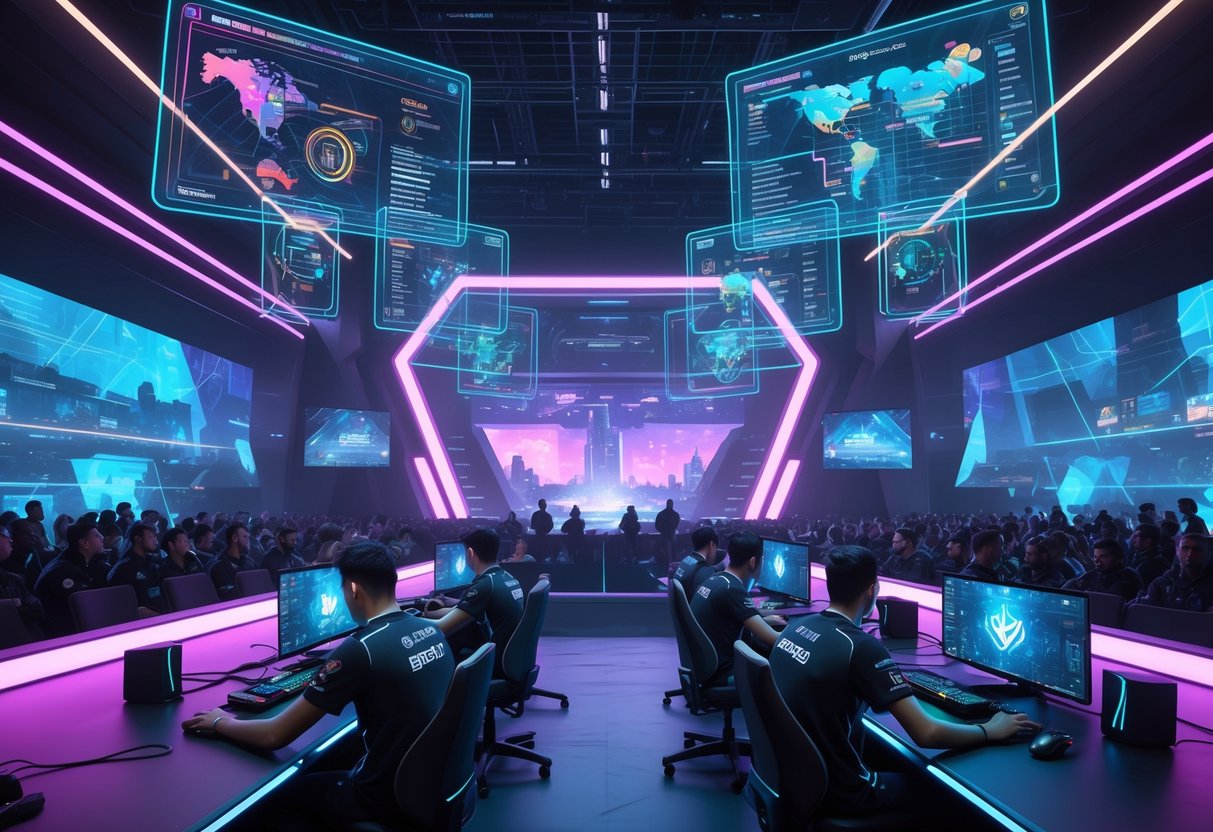
Deadlock’s pro scene looks ready to explode through 2025. Valve’s new update strategy and more interest from big esports orgs point to big changes on the horizon.
Upcoming Tournaments
The Aurora Deadlock Masters, with its £8,000 prize pool, is just a starting point. Sure, it’s mostly streamers for now, but this lays the foundation for serious competition.
Here’s what’s coming soon:
- Community tournaments are already rolling out
- Pros like Hardecki (ex-Apex Legends) and Vegas (PUBG) have gone all-in on Deadlock
- Prize pools should get bigger as more people tune in
The latest update added six heroes and shifted the map from four lanes to three. That opens up new strategies for tournament organisers to highlight.
Valve’s move to fewer, bigger updates should keep the game stable for pros. Tournament organisers usually prefer games that don’t change every week.
Potential for International Leagues
Big organisations are already sniffing around. Danish org Heroic has started posting Deadlock content, hinting at bigger plans.
Other top esports clubs are rumored to be looking into Deadlock, but nothing official yet. This is pretty much the pattern any time Valve drops a new competitive title.
The timing feels right for international growth. Deadlock keeps about 20,000 concurrent players on Steam, which is a solid base for regional leagues.
What’s driving international expansion:
- Valve’s strong history with Dota 2 and CS2 tournaments
- More pros from different regions joining in
- The MOBA format’s proven global appeal
We’ll probably see different playstyles pop up in each region, which always makes international matchups more interesting.
Transition Pathways for Aspiring Pro Players

New players can break into Deadlock’s pro scene through community tournaments and grassroots events. Training resources are still pretty limited, but if you’re dedicated, you’ll find opportunities in fight nights and collegiate leagues.
Opportunities for New Talent
Community tournaments like Deadlock Fight Night really give new players the easiest way in. These weekly events draw serious competitors, but you don’t need a sponsor or a team contract to jump in.
Collegiate esports programs open up another path. More universities now run Deadlock teams, so students get structured competition experience.
High-profile transitions are already happening. Former Overwatch 2 pros have started playing Deadlock, so the game’s already pulling in established talent. That means newcomers can sometimes find mentorship from veterans.
Right now, with just 15,000-20,000 players, there’s less competition for recognition. In contrast to packed games, standout plays get noticed almost immediately.
Quick win: Jump into community Discord servers to find scrim partners and catch tournament announcements.
Training and Resources
Deadlock players mostly use community-made content to improve. The official training modes exist, but honestly, they don’t go as deep as what you see in other big esports titles.
Available resources include:
- Match replays from top players
- Community coaching on Discord
- Weekly tournament streams to study strategies
- Hero guides from pros who recently switched over
Spectator tools could use some work, but you can still watch high-level matches directly. That gives up-and-comers a look at the current meta in action.
Warning: Don’t spend money on expensive coaching services just yet. Many charge premium rates for advice that’s not even proven, since the meta keeps shifting.
Focus practice time on the basics instead of memorizing specific strats. With all these balance updates, mechanical skill and good game sense matter way more than knowing every comp.
Most top players spend 4-6 hours a day grinding ranked and reviewing games.
Frequently Asked Questions
Fans and analysts keep asking tough questions about Deadlock’s competitive future. Which teams will dominate? How will patch updates shake up strategies? No one really knows yet, and that’s part of the excitement as the pro scene takes shape.
Who are the top contenders for the upcoming Deadlock championships?
The competitive field is still wide open since Deadlock’s pro scene is just getting started. Teams with strong MOBA and tactical shooter backgrounds seem best positioned for early wins.
We’re already seeing organizations bring in players from Dota 2, Overwatch, and Valorant. The game’s mix of hero shooter mechanics and MOBA strategy favors teams that adapt quickly.
Early results point to teams with balanced comps doing better than squads built around one superstar. Still, with a small player base, upsets happen all the time.
What strategies are analysts expecting teams to favour in the next Deadlock pro league season?
Teams will probably lean into flexible comps that can adapt in the middle of a match. Right now, the meta rewards squads that master both gathering info and pulling off well-timed aggression.
Analysts expect more focus on coordinated rotations and controlling the map. Teams that blend MOBA-style objectives with sharp shooting mechanics should come out ahead.
Balancing defensive utility and offensive pressure seems pretty crucial. Teams that play too passively usually get outplayed by groups that coordinate their attacks.
How have recent patch updates affected team strategies going into the international Deadlock tournament?
Recent patches have really changed the balance between defense and offense. Teams keep tweaking their comps to deal with hero ability changes and new item effects.
New items have opened up some different strategies. Teams with strong coaches seem quicker to spot and use these meta shifts.
A lot of pros are testing out hero combos that nobody bothered with before. The latest patch made some defensive strats less reliable, so teams are going more aggressive.
Which Deadlock professional players should we keep an eye on this season?
No single player has really broken out yet, just because the competitive scene is so new. Still, players with solid tactical shooter and MOBA backgrounds are adapting fast.
We’re watching for players who show great game sense and communicate well. In Deadlock’s team-heavy environment, those skills matter more than just raw aim.
Look out for anyone who can play multiple hero roles at a high level. Right now, versatility seems way more important than being a one-trick.
How does team composition in Deadlock impact gameplay at a professional level?
Team comp shapes both early positioning and how teams scale into the late game. Pro teams need to weigh immediate map control against long-term strategy.
During hero selection, teams have to juggle a lot—making sure heroes work together and cover both defense and offense.
Win rates swing a lot based on comp synergy, not just individual hero power. Teams that draft with a clear plan usually beat groups relying on flashy picks.
What are the predictions for emerging dark horse teams in the Deadlock pro scene?
Smaller organizations with dedicated coaching staff might just catch the big names off guard. The way this game works, preparation and strategic depth often matter more than flashy individual skill.
Some teams from regions with strong MOBA traditions could adapt quicker than people think. The strategic side of Deadlock really fits with the competitive gaming cultures in those places.
Honestly, I wouldn’t be surprised if we see some upsets from teams that pour time into learning the game’s quirks. If a team nails the early meta, that edge could last a while before the big orgs figure things out.

